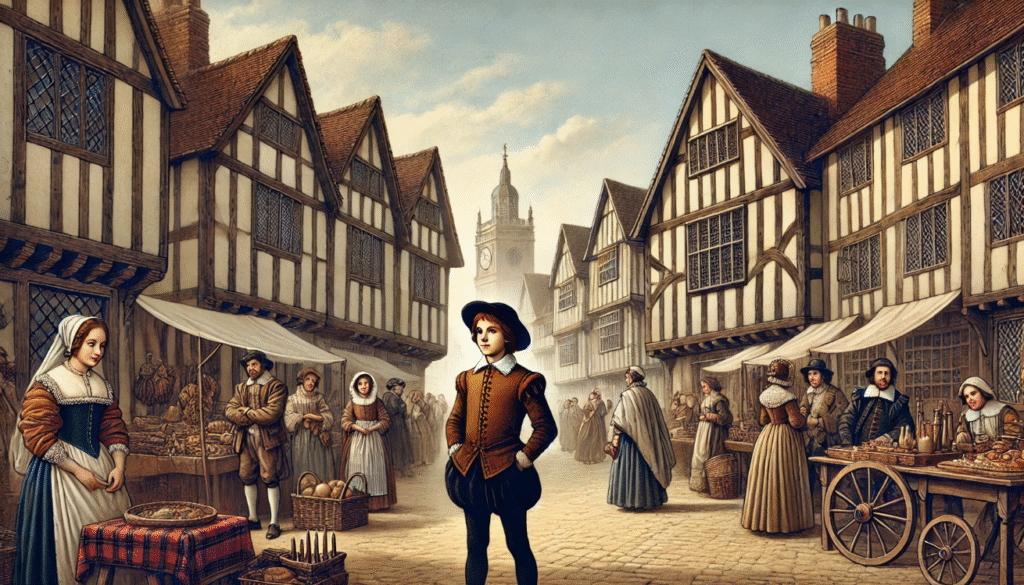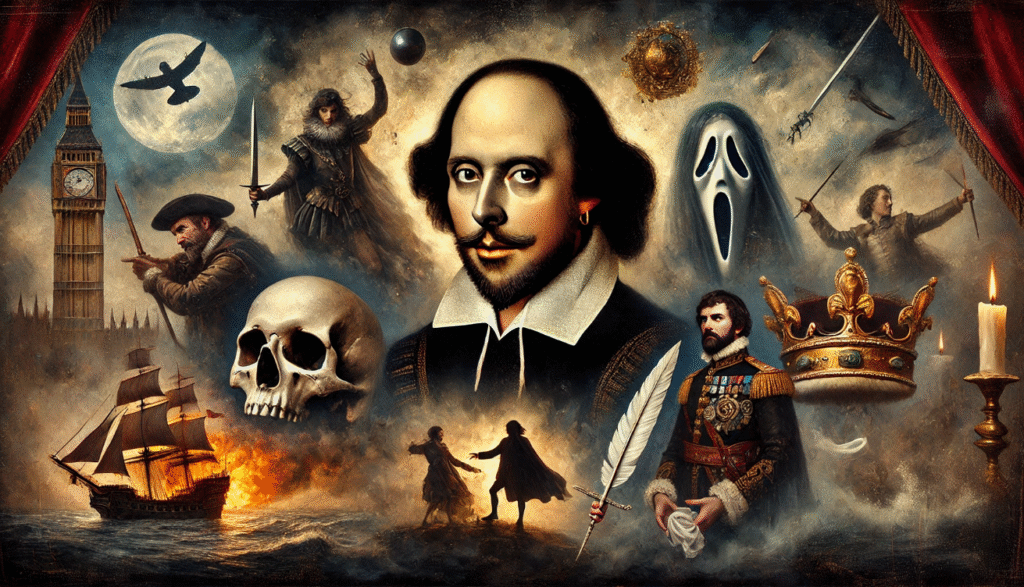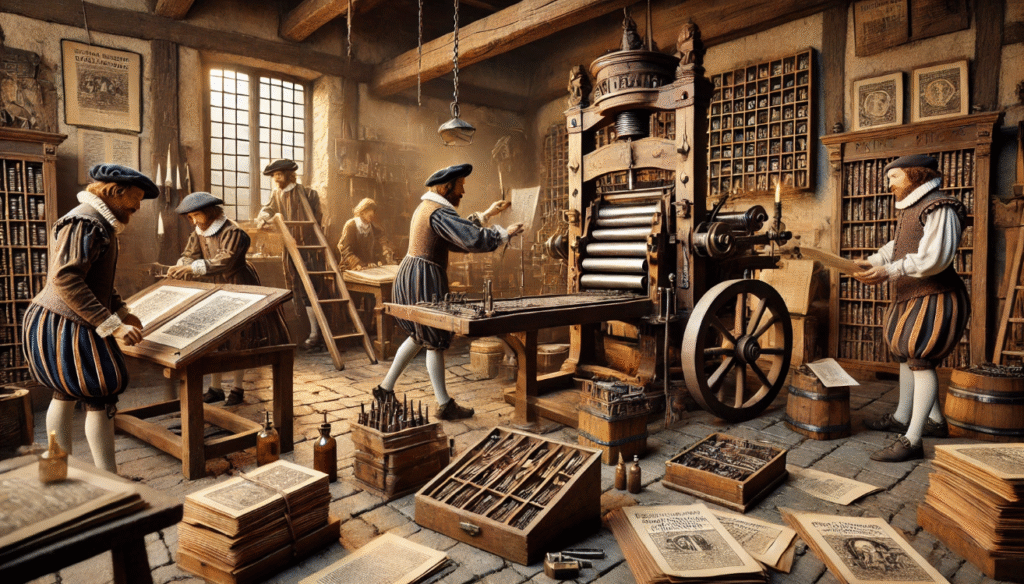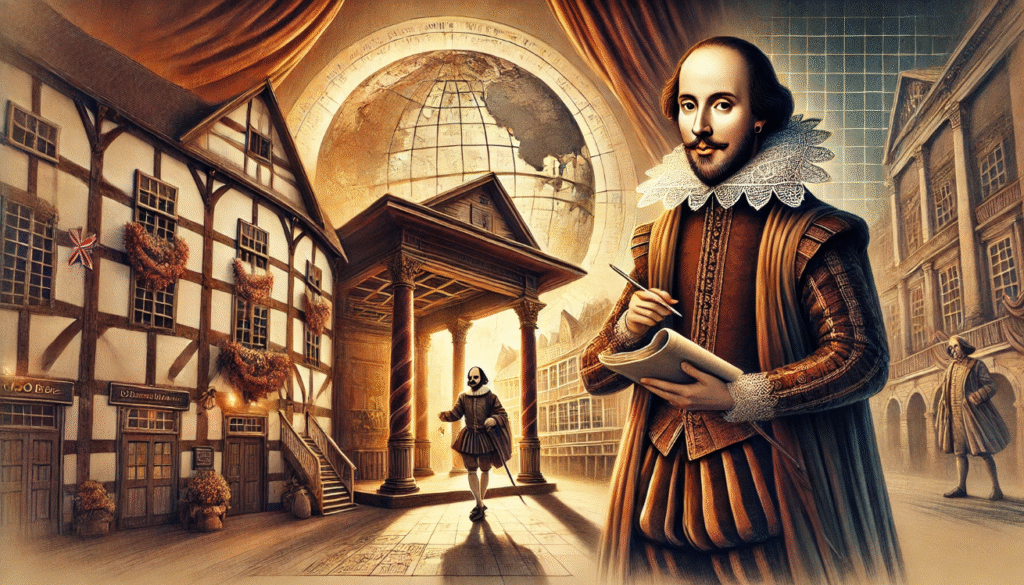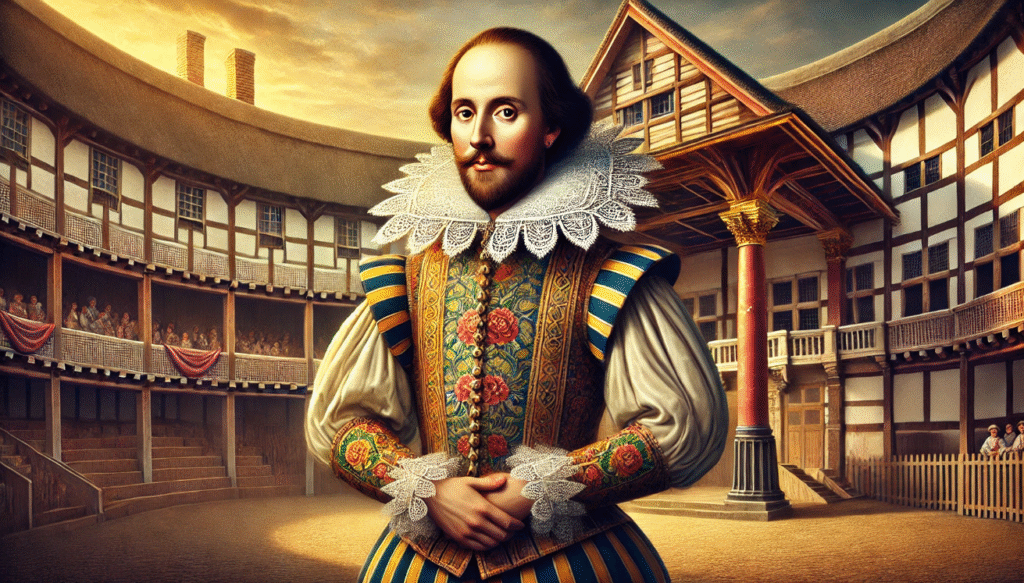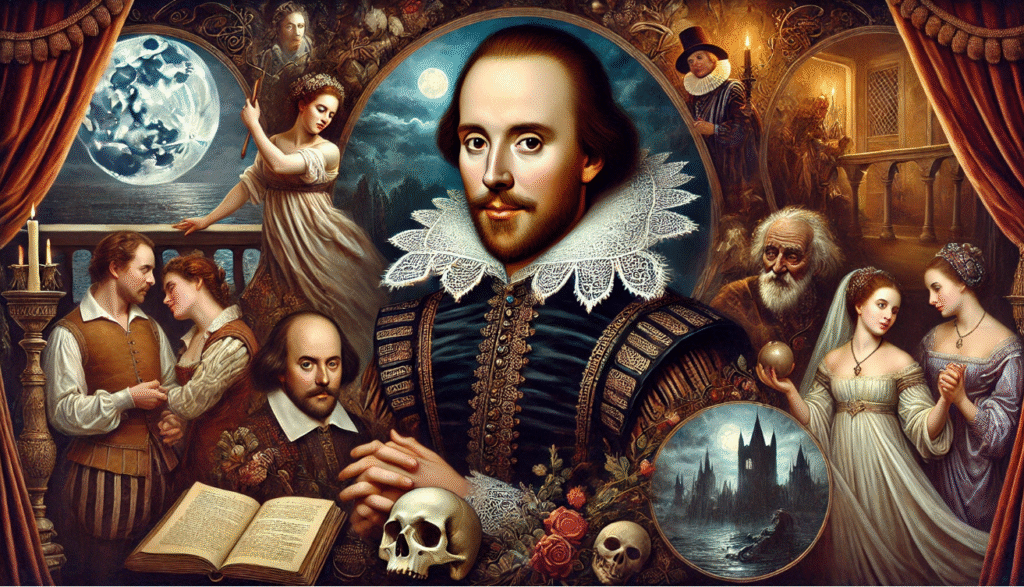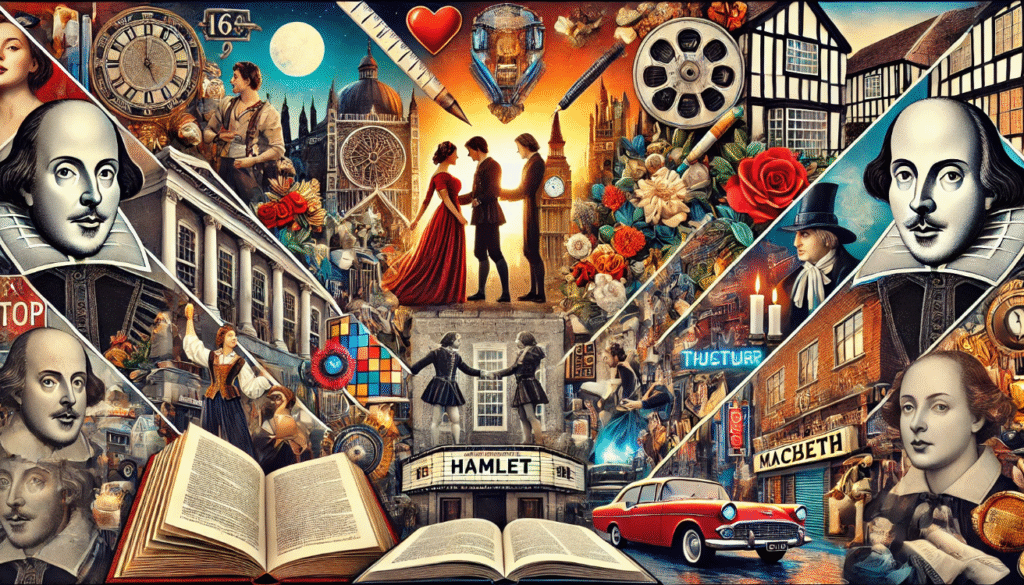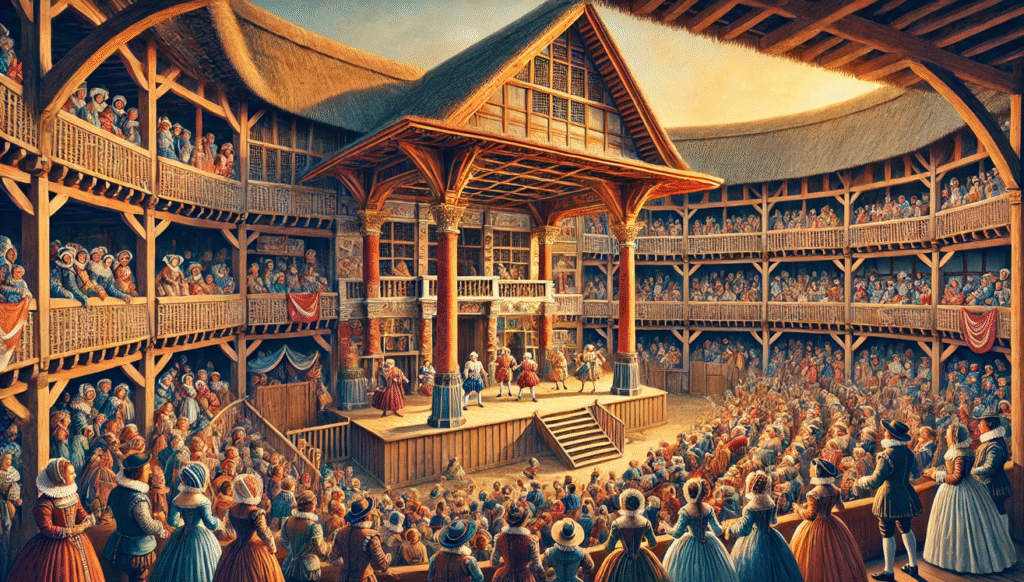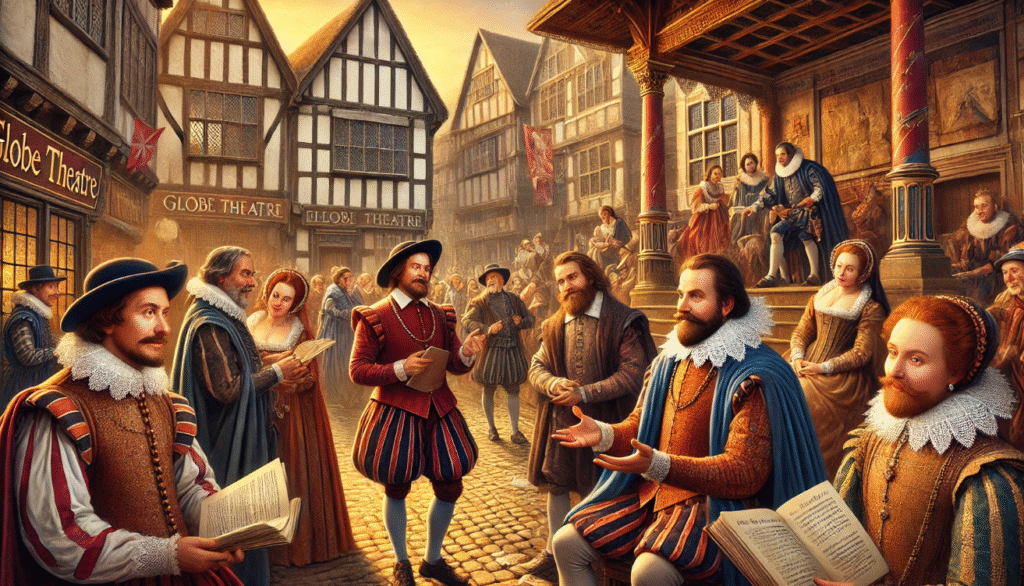 William Shakespeare’s influence on the world of theater is unparalleled, with his works continuing to captivate audiences centuries after they were first penned. One of the most remarkable aspects of Shakespeare’s role in the development of theatrical language his profound contribution to the development of theatrical language. From his inventive use of words to his groundbreaking exploration of human emotions, Shakespeare’s soliloquies are at the heart of his linguistic mastery. In this article, we will explore Shakespeare’s role in the development of theatrical language explained—how these iconic speeches shaped not only the English language but also the structure and emotional depth of modern drama. Shakespeare’s role in the development of theatrical language ability to capture the complexities of the human psyche through language remains a cornerstone of theatrical storytelling today.
William Shakespeare’s influence on the world of theater is unparalleled, with his works continuing to captivate audiences centuries after they were first penned. One of the most remarkable aspects of Shakespeare’s role in the development of theatrical language his profound contribution to the development of theatrical language. From his inventive use of words to his groundbreaking exploration of human emotions, Shakespeare’s soliloquies are at the heart of his linguistic mastery. In this article, we will explore Shakespeare’s role in the development of theatrical language explained—how these iconic speeches shaped not only the English language but also the structure and emotional depth of modern drama. Shakespeare’s role in the development of theatrical language ability to capture the complexities of the human psyche through language remains a cornerstone of theatrical storytelling today.
Shakespeare’s Innovations in Language

William Shakespeare was not just a playwright; he was a linguistic innovator. Shakespeare’s role in the development of theatrical language contributions to the English language are vast, and many words and phrases he coined are still in use today. By pushing the boundaries of language, Shakespeare created a richer, more expressive way of communicating on stage.
One of his most famous innovations was coining new words. Terms like “bedroom,” “eyeball,” “lonely,” and “swagger” were first used by Shakespeare, and they have since become integral to modern English. Shakespeare’s role in the development of theatrical language ability to play with language helped him convey complex emotions and ideas more powerfully than ever before.
In addition to creating new words, Shakespeare masterfully employed metaphors, similes, and other figures of speech. This poetic style not only made his works more compelling but also expanded the possibilities for expression in theater. His use of language went beyond mere dialogue—it was an essential tool for storytelling, deepening the audience’s connection to the characters and plot.
Shakespeare’s language innovations also extended to how he used rhythm and structure in his plays. His careful use of iambic pentameter and blank verse allowed for a natural flow of speech that was both musical and meaningful, making his characters’ words resonate deeply with audiences.
Ultimately, Shakespeare’s innovative use of language transformed the way we write and speak today, influencing playwrights and writers for generations to come. His words live on, reminding us of the power language has to shape our world.
Shakespeare’s Use of Structure and Rhythm

Shakespeare’s genius wasn’t just in his words, but in how he structured his plays and used rhythm to enhance the storytelling. His mastery of structure and rhythm created a deeper emotional connection between the characters and the audience.
One of the key elements of Shakespeare’s writing is iambic pentameter, a rhythmic pattern that uses ten syllables per line, alternating between unstressed and stressed syllables. This gave his plays a natural flow that mimicked everyday speech while maintaining a formal, poetic quality. For example, in Hamlet’s famous soliloquy, “To be or not to be, that is the question,” the rhythm of the line heightens its emotional weight and makes it more memorable.
Shakespeare also cleverly alternated between verse and prose. While characters of high status often spoke in verse, more casual or lower-class characters used prose. This distinction added layers to the dialogue, showing the social dynamics and emotional states of the characters. Prose was often used for humor, while verse conveyed deeper reflection or nobility.
By mixing these structures and rhythms, Shakespeare brought variety and richness to his plays, allowing the language to adapt to the mood and meaning of each scene. His use of rhythm and structure wasn’t just for aesthetic appeal—it helped shape the emotional arc of the story, making his plays unforgettable.
This focus on structure and rhythm laid the foundation for modern playwriting, where writers continue to explore the power of rhythm in shaping narrative and character.
Theatrical Language as a Tool for Characterization

Shakespeare’s use of language was a powerful tool for revealing the depths of his characters. Through their dialogue, he painted complex, multi-dimensional personalities that continue to captivate audiences today.
One of the most effective ways Shakespeare characterized his figures was through distinctive speech patterns. Each character’s way of speaking—whether they used formal verse, casual prose, or witty wordplay—gave insight into their personality and social status. For example, the noble Hamlet speaks in eloquent, reflective verse, while the mischievous Puck from A Midsummer Night’s Dream uses playful prose to show his mischievous nature.
Shakespeare also used soliloquies as a tool for deeper characterization. These monologues allowed characters to express their innermost thoughts and struggles, creating a direct connection with the audience. In Hamlet’s famous “To be or not to be” soliloquy, we see the character’s internal conflict and philosophical pondering, which reveals his complexity and indecision.
The language also helped distinguish moral or emotional states. For instance, Lady Macbeth’s increasingly frantic speech in Macbeth mirrors her descent into madness. The shift from calm and controlled to erratic and desperate in her dialogue highlights her psychological unraveling.
By using language so strategically, Shakespeare gave his characters a voice that was as unique as their actions. His approach to characterization through dialogue set a standard for modern playwrights, showing how language can shape a character’s identity and journey on stage.
The Influence on Drama Genres and Forms

Shakespeare’s mastery of language didn’t just shape his characters—it also revolutionized the very structure of drama genres. His works blended traditional forms, like tragedy, comedy, and history, creating a new way of writing plays that influenced generations of playwrights.
In tragedy, Shakespeare expanded the emotional range and depth of the genre. His tragic characters, such as Macbeth and Hamlet, express complex inner turmoil through powerful language. These plays explore themes like ambition, fate, and moral conflict, with language that heightens the sense of inevitable downfall. His ability to intertwine poetic dialogue with raw emotion made tragedies resonate deeply with audiences.
In comedy, Shakespeare used language to create wit and humor. His plays, such as Twelfth Night and A Midsummer Night’s Dream, feature wordplay, puns, and clever dialogue that entertain while revealing character relationships and societal norms. The language in his comedies often pushes the boundaries of logic, offering both absurdity and insight, which has influenced comedic writing ever since.
Shakespeare also transformed history plays by using language to mix fact with dramatic interpretation. His plays like Henry V blended historical events with poetic speeches, inspiring national pride and conveying the grandeur of leadership. Through stirring rhetoric and compelling dialogue, Shakespeare brought historical figures to life, making history both entertaining and thought-provoking.
Shakespeare’s ability to merge these genres—using language as a bridge between comedy, tragedy, and history—paved the way for modern playwrights to experiment with genre-blending. Today, many plays continue to draw on this Shakespearean approach, using language to challenge genre conventions and create new forms of dramatic storytelling.
The Legacy of Shakespeare in Modern Theater

Shakespeare’s influence on modern theater is undeniable. His innovative use of language, characterization, and structure continues to shape contemporary plays and performances around the world. Even centuries after his death, his works remain a central part of the theatrical canon.
One of the most significant ways Shakespeare’s legacy endures is through modern adaptations. Plays like West Side Story (a retelling of Romeo and Juliet) and The Lion King (inspired by Hamlet) show how Shakespeare’s themes—love, power, betrayal—still resonate in today’s stories. Writers and directors regularly draw from his works, adapting his language and ideas to fit modern settings or new mediums.
Shakespeare’s influence also persists in theatrical style. His techniques, such as the use of soliloquies, the mixing of prose and verse, and the blending of genres, are still widely used by playwrights today. Writers like Tom Stoppard and Harold Pinter have drawn on Shakespeare’s approach to language and structure to create dynamic, emotionally rich plays that captivate modern audiences.
Moreover, Shakespearean themes—the complexities of human nature, the struggle between good and evil, and the questioning of fate—continue to inspire playwrights, directors, and actors. Modern theater still seeks to explore the same universal themes that Shakespeare tackled, using his works as a starting point for deeper exploration of contemporary issues.
Ultimately, Shakespeare’s legacy in modern theater is a testament to the enduring power of his language and ideas. His influence remains as strong as ever, shaping the way we write, perform, and experience drama today.
Practical Insights for Writers and Theater Enthusiasts

For writers and theater enthusiasts, Shakespeare offers a wealth of insights that can elevate your craft and deepen your appreciation for the art of drama. Here are some practical tips inspired by Shakespeare’s techniques:
- Experiment with Language
Shakespeare’s language was innovative, and he often played with words, creating new ones and using metaphors, similes, and puns to add depth. As a writer, try experimenting with language to make your dialogue more vivid. Play with rhythm, rhyme, and word choice to evoke emotions and create memorable characters. - Focus on Character Voice
One of Shakespeare’s greatest strengths was how he gave each character a unique voice. Whether through verse or prose, each character’s speech reflected their personality, status, and emotions. When writing your own characters, think about how their background and personality would shape the way they speak. A strong, distinct voice adds layers to your characters and helps your audience connect with them. - Use Soliloquies to Explore Internal Conflict
Shakespeare’s soliloquies allowed characters to express their deepest thoughts and struggles, revealing their inner conflicts. Consider incorporating soliloquies or monologues into your work to give your characters moments of introspection. This can help the audience understand their motivations and emotional journey on a deeper level. - Experiment with Genre Blending
Shakespeare didn’t limit himself to a single genre. His works blended tragedy, comedy, and history, creating complex, multifaceted stories. As a writer, don’t be afraid to mix genres. Combining elements of comedy and drama, or history and fantasy, can add richness and unpredictability to your plays. - Draw Inspiration from Universal Themes
Shakespeare’s plays explore timeless themes like love, ambition, betrayal, and fate. These themes resonate with audiences across cultures and generations. For your writing, focus on universal themes that have emotional power and relevance, allowing your work to connect with a wide audience. - By incorporating these strategies into your own writing, you can draw from Shakespeare’s enduring legacy and create works that resonate deeply with modern audiences. Whether you’re crafting a play or simply enjoying the world of theater, Shakespeare’s influence is a rich source of inspiration.
 Shakespeare’s role in the development of theatrical language is immeasurable. His innovative use of words, structure, and rhythm transformed the art of drama, laying the foundation for modern playwriting and performance. Through his inventive language, complex characters, and exploration of universal themes, Shakespeare shaped how stories are told on stage, making his works timeless and relevant today.
Shakespeare’s role in the development of theatrical language is immeasurable. His innovative use of words, structure, and rhythm transformed the art of drama, laying the foundation for modern playwriting and performance. Through his inventive language, complex characters, and exploration of universal themes, Shakespeare shaped how stories are told on stage, making his works timeless and relevant today.
His legacy continues to inspire playwrights, actors, and theater enthusiasts around the world. Whether through his memorable soliloquies, his mastery of verse and prose, or his genre-blending creativity, Shakespeare’s influence remains a cornerstone of theatrical language. As writers and theater lovers, we can draw invaluable lessons from his work, embracing his techniques to craft richer, more compelling narratives.
Ultimately, Shakespeare’s contributions to theater are more than historical—they are alive and thriving in modern drama. By studying his language, we can gain deeper insight into both the craft of storytelling and the complexities of the human experience, ensuring that his legacy endures for generations to come.


